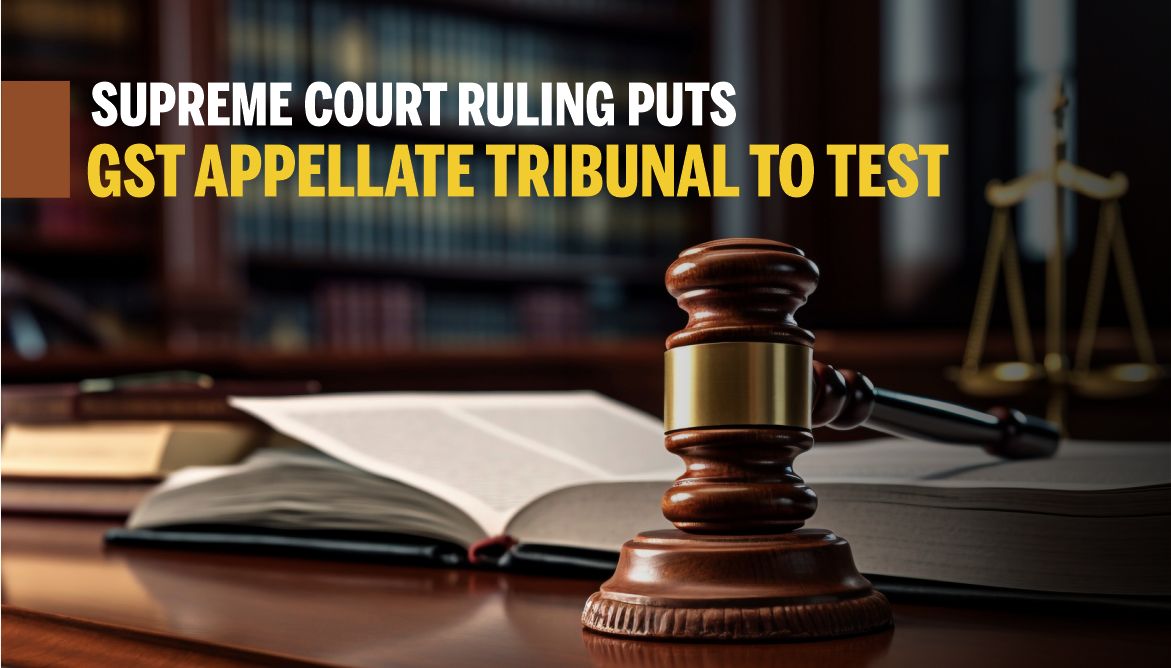Supreme Court Ruling Puts GST Appellate Tribunal to Test

On 19 November 2025 the Supreme Court of India struck down key provisions of the Tribunals Reforms (Rationalisation & Conditions of Service) Act, 2021 which had governed the appointment, tenure and service conditions of tribunal members across sectors. The Court held that the Act re-introduced provisions previously declared unconstitutional, thus violating separation of powers and judicial independence. In effect the bench directed the Centre to establish a “National Tribunals Commission” within four months to oversee independent, transparent functioning of tribunals.
To understand why this ruling matters it is necessary to step back and look at the tribunal regime in India and how this reform law attempted to reshape it. Then we examine how this applies to the newly constituted Goods and Services Tax Appellate Tribunal (GSTAT) and the implications even in its early phase.

Supreme Court strikes down provisions of the Tribunals
Why This Matters for Tribunals
Tribunals have served as specialised adjudicatory bodies across regulatory, tax, licensing and statutory dispute-mechanisms. Over time concerns emerged about the extent of executive influence in appointments, tenure, re-appointment and administrative control of tribunal members. The 2021 Act sought to bring uniformity: it fixed minimum age limits, set four-year tenure for many tribunal chairs/members, specified criteria for re-appointment, and empowered the Centre to make rules for service conditions.
However the Supreme Court found that the Act merely recreated provisions earlier struck down (in cases such as Madras Bar Association IV and Madras Bar Association V) and therefore could not stand. The Court’s key observations included that the Constitution mandates independence of adjudicatory institutions and that the executive cannot dominate appointment or tenure mechanisms where it is frequently a litigant. The verdict emphasises that tribunal reforms cannot be merely formalistic; their structure must respect the separation of powers doctrine.
The Position of GSTAT
The GST Appellate Tribunal (GSTAT) was established under section 109 of the Central Goods and Services Tax Act, 2017 (“CGST Act”) as a national body to hear appeals arising under the goods and services tax regime. Its aim was to ensure uniformity of decision-making, reduce the load on High Courts and expedite tax litigation. GSTAT Rules 2025 are notified under section 111 of the CGST Act, laying down procedural aspects such as timelines, limitation rules and bench constitution.
In early 2025 the government moved to operationalise GSTAT by appointing members and notifying benches across states. Yet its full functioning is still in the initial phase and its jurisprudence is nascent.
Implications of the Supreme Court Ruling on GSTAT
Although GSTAT is a specific tax tribunal, the recent Supreme Court judgment has implications for its foundational architecture:
Appointment and Tenure
Since the tribunal reforms law has been struck down, any appointment or tenure framework mirroring the invalidated provisions may invite challenge. If GSTAT’s member appointments follow the four-year term, fixed age criteria or executive-dominated selection, their validity could be questioned.
Institutional Independence
The bench emphasised structural safeguards that ensure tribunals function independent of executive control. GSTAT will need to demonstrate that its selection, tenure and administrative mechanisms conform to that principle, not just in form but in substance.
Operational Certainty
Given GSTAT is freshly constituted, any uncertainty in its legal basis may affect stakeholder confidence. Although the law governing GSTAT (CGST Act) remains intact, its procedural rules and constitution need alignment with the Supreme Court’s doctrine on tribunals.
Wider Legal Architecture
The Court’s direction to form a National Tribunals Commission within four months suggests that the tribunal ecosystem is in flux. GSTAT’s role, structure or oversight may be shaped by that institutional development. Stakeholders will watch how the government responds and whether GSTAT is carved out or brought under a new umbrella.
Our View
For tax professionals, the sector and litigation counsel, the recent ruling signifies that the tribunal environment in India is being recalibrated. GSTAT, being one of the prominent new appellate bodies in indirect taxation, stands at a critical juncture. It now remains to be seen how the government responds, how GSTAT’s governance is shaped and whether its architecture meets the fresh constitutional yardsticks. The next few months could determine whether GSTAT fulfills its promise of credible, independent appellate resolution in the GST domain.
